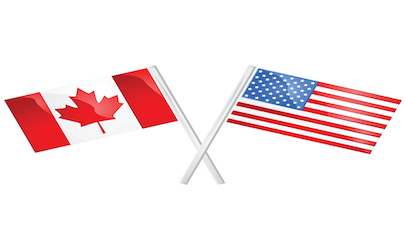The United States and Canada have comparable food safety systems, a fact that has now been officially recognized by the U.S. Food and Drug Administration (FDA). The food safety systems for Australia and the European Union are likely coming soon. The U.S. and New Zealand have had an agreement that their systems are comparable since 2012.  The Food Safety Systems Recognition Arrangement between the U.S. and Canada lays down a framework for regulatory cooperation between the neighboring counties that runs the gamut from scientific collaboration to outbreak response. The FDA, Public Health Agency of Canada and the Canadian Food Inspection Agency are all parties to the agreement. FDA needs foreign help in implementing the historic Food Safety Modernization Act, which calls for imposing the same standards on foreign food as required of domestic sources. The agreement sets up a U.S.-Canada Regulatory Cooperation Council to help the two countries “better align their food safety regulatory systems, reduce unnecessary duplication, enhance information sharing, and to the extent possible, leverage resources so that the agencies can better meet their public health objectives.” The use of an agreement over comparable systems is pretty much the same way the U.S. Department of Agriculture (USDA) has gone about approving countries for importing meat into the U.S., and visa versa. Government agreements, especially those that clear away overlap and duplication, are usually met with favor by producers and manufacturers. “This recognition arrangement will significantly benefit both consumers and the produce industry by facilitating trade, reducing redundant regulatory requirements and enabling even greater confidence in the produce that is traded between our two countries,” said Jim Gorny, vice president for food safety and technology for the American-based Produce Marketing Association. The complete text of the agreement is available on the FDA website.
The Food Safety Systems Recognition Arrangement between the U.S. and Canada lays down a framework for regulatory cooperation between the neighboring counties that runs the gamut from scientific collaboration to outbreak response. The FDA, Public Health Agency of Canada and the Canadian Food Inspection Agency are all parties to the agreement. FDA needs foreign help in implementing the historic Food Safety Modernization Act, which calls for imposing the same standards on foreign food as required of domestic sources. The agreement sets up a U.S.-Canada Regulatory Cooperation Council to help the two countries “better align their food safety regulatory systems, reduce unnecessary duplication, enhance information sharing, and to the extent possible, leverage resources so that the agencies can better meet their public health objectives.” The use of an agreement over comparable systems is pretty much the same way the U.S. Department of Agriculture (USDA) has gone about approving countries for importing meat into the U.S., and visa versa. Government agreements, especially those that clear away overlap and duplication, are usually met with favor by producers and manufacturers. “This recognition arrangement will significantly benefit both consumers and the produce industry by facilitating trade, reducing redundant regulatory requirements and enabling even greater confidence in the produce that is traded between our two countries,” said Jim Gorny, vice president for food safety and technology for the American-based Produce Marketing Association. The complete text of the agreement is available on the FDA website.
Sponsored by Marler Clark
